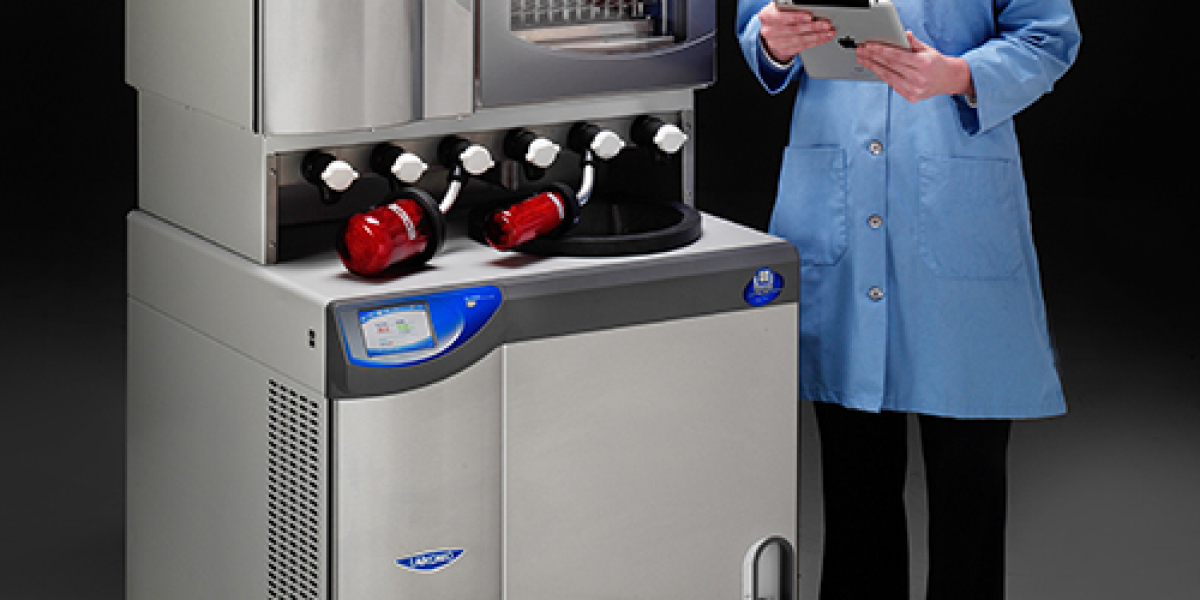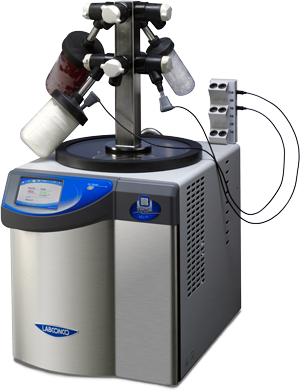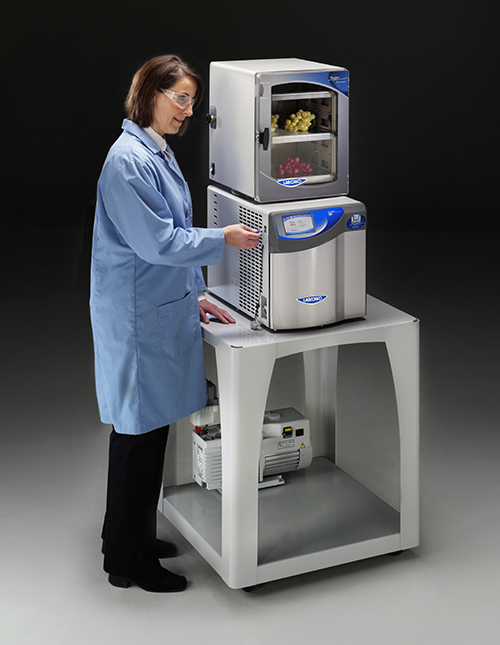What's the difference between a home freeze dryer and a lab freeze dryer?

Many people search for a freeze dryer and are surprised, even overwhelmed, with the number of choices available. The biggest question seems to arise when trying to determine how a freeze dryer for home use is different than a freeze dryer for lab use. Do the differences between the two really matter?
The short answer is yes, it matters!
While the general lyophilization concept, sublimation, is the same for both, the equipment, and the results, are vastly different. Below are the key differences.
Application
The most apparent difference is in how the two types are used. Home versions are primarily for freeze drying food for preservation, to be eaten later. Lab freeze dryers are used to preserve samples for storage or to change the state of the sample for testing/research. Be careful not to confuse lab freeze dryers with industrial freeze dryers. Industrial lyophilizers are very large, possibly an entire room, and are often used in manufacturing, such as freeze drying pharmaceuticals, or fruit to be put into cereal.
Size and Capacity
Home freeze dryers are overall smaller. They will almost always be an all-inclusive unit with a vacuum pump built in; small enough to fit on a countertop. A lab freeze dryer, however, requires multiple components – the lyophilizer itself, a drying accessory such as manifold and flasks for small samples or a tray dryer for large samples or vials that may need to be stoppered under vacuum or nitrogen. A vacuum pump that reaches an ultimate vacuum of 2 x 10-3 mBar is required, for sublimation to occur. They can be designed to sit on a benchtop or cart, or as consoles that sit on the floor.
Lab freeze dryer s can range from a similar footprint size as home freeze dryers to significantly larger, depending on the capacity and what drying accessory is used. For example, a manifold is much smaller than a tray dryer. They also use a much larger, stronger vacuum pump with a significantly deeper vacuum.
s can range from a similar footprint size as home freeze dryers to significantly larger, depending on the capacity and what drying accessory is used. For example, a manifold is much smaller than a tray dryer. They also use a much larger, stronger vacuum pump with a significantly deeper vacuum.
More important than physical size is its capacity. Lab freeze dryers are offered in a greater range of capacities, both smaller and larger than home units. Home freeze dryers average capacities of 3.8 liters to 15.1 liters (1 to 4 gallons), while lab freeze dryers range anywhere from one liter to 35 liters or more (0.26 to 9.25 gallons).
Temperature
One of the most important factors in determining the right lyophilizer for your needs is the temperature its collector coil can reach. Home freeze dryers get to around -40° C (-40° F) on average. Lab freeze dryers cool anywhere from -50° C (-58° F) to -105° C (-157° F).
Collector temperatures are important in the lab because many samples contain solvents such as acetonitrile and DMSO or acids such as TFA. These solvents require a colder collector temperature to give a temperature differential and prevent melt back of the sample during the lyophilization process. Different materials of construction are also used to handle these solvents and acids.
Measurements
If you're trying to determine the intended purpose of a freeze dryer, an easy way to tell is the measurements. Home lyophilizers tend to use gallons and Fahrenheit while lab lyophilizers use liters and Celsius.
Cost
Obviously the price tag is going to be a bit different between a home freeze dryer and lab freeze dryer. It may even be the reason a lab tries to make use of a home freeze dryer for scientific purposes. Home freeze dryers on average range from a few hundred to a few thousand dollars while lab freeze dryers tend to start at a few thousand dollars and easily increase to tens of thousands with all of the necessary accessories.
Similarities

Now that we've seen all of the differences between home freeze dryers and lab freeze dryers, it's worth noting the ways they are alike. They are both designed to remove moisture for long-term storage of samples. Both use a vacuum pump, though the home pump is smaller and provides less vacuum than lab freeze dryers require. They also share some similar design traits. Home freeze dryers are designed like a lab's bulk tray dryer with multiple shelves to place the food (samples) for lyophilizing.
If you're working in a lab or have a scientific purpose, it's important to get the right freeze dryer for your application. Use our Scout™ Lab Equipment Selector to help you narrow down the choices.
| chevron_left | How to determine end point during laboratory lyophilization | Articles | Washing efficiencies reduce laboratory headaches | chevron_right |





